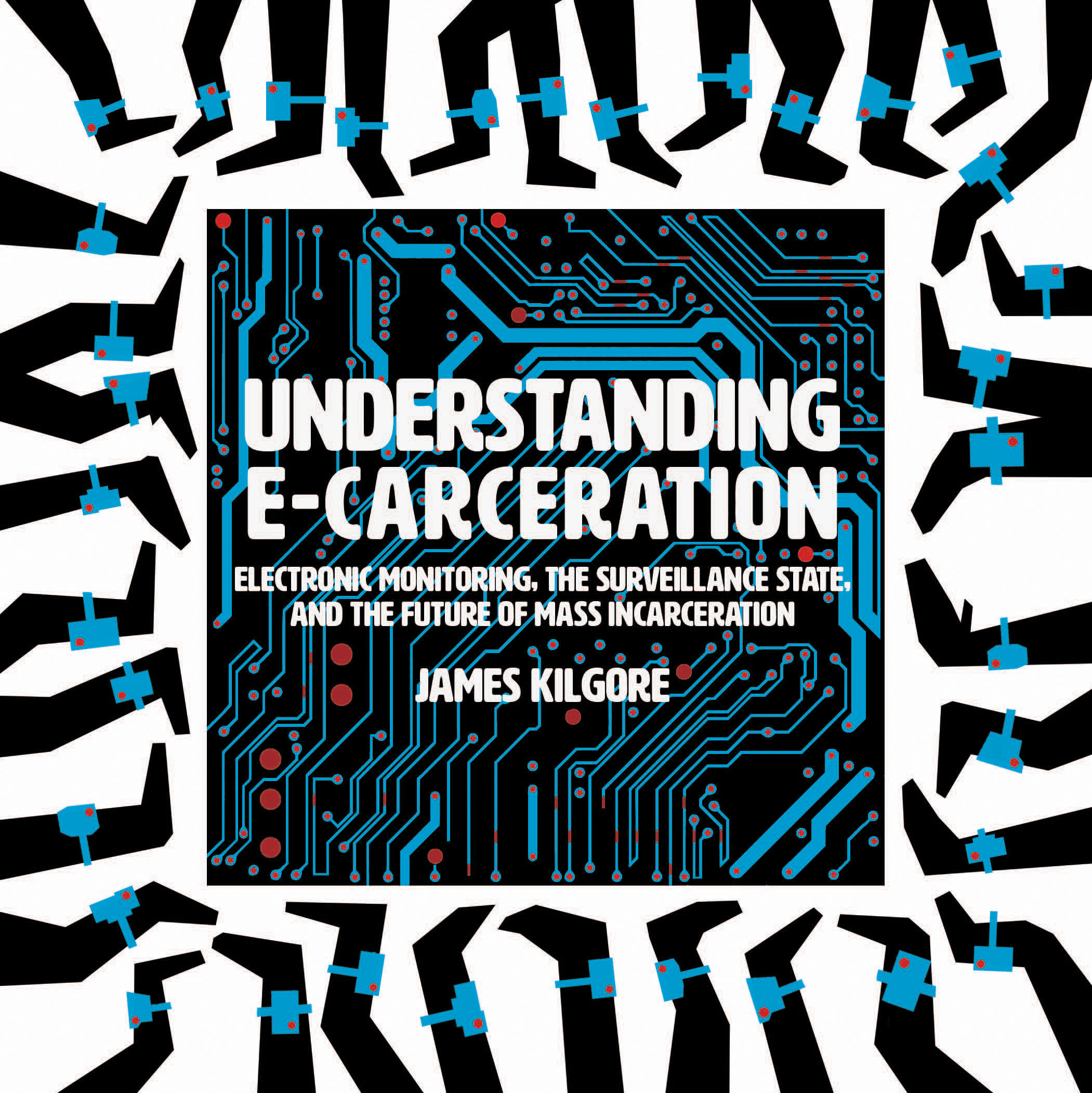In 2013, Camden, New Jersey (population: 79,000), hit the big time in the criminal justice world with bold moves to dismantle its entire police department. At the time, this experiment was widely touted as a model for reform, and in the wake of the 2020 murder of George Floyd in Minneapolis (and the rise of a movement to abolish and defund the police), Camden’s history returned to the national limelight. The city drew headlines as an example of a place that had disbanded its police force and prospered. Camden County Police Chief Scott Thomson became a celebrity, called upon for more than 300 interviews, including from outlets as distant as New Zealand.
But despite the rash of people singing praises for the Camden model, what actually emerged was more ominous, what researcher Brendan McQuade has called a “Silicon Valley way of policing.” Instead of a model for transformation, Camden offers a fine-grained cautionary tale for activists who seek to redress systemic injustices but also want to ensure high-tech policing doesn’t sneak in the back door.
But first a little history. Though located slightly outside the boundaries of what is usually called the Rust Belt, Camden’s history feels very much like that of Youngstown, Ohio, or Flint, Michigan. Despite having a population that is 83 percent Black and Latinx and a reputation as the poorest and most dangerous city in the nation, Camden didn’t always symbolize urban decay. The city was once home to hundreds of different industries. Campbell’s invented condensed soup in the city and went on to produce it there for decades. In the pre-digital days, electronics company RCA employed 12,000 workers in Camden, mostly in production of radios and components. The crown jewel of Camden manufacturing was the New York Shipbuilding Corporation plant, which produced a major portion of the U.S. Navy’s fleet during both world wars, as well as the NS Savannah, the only nuclear passenger ship ever built.
Despite the rash of people singing praises for the Camden model, what actually emerged was more ominous, what researcher Brendan McQuade has called a ‘Silicon Valley way of policing.’
By the mid-1950s, time began to rush past these companies’ products and management models. The decline in demand for wartime ships led to the shipyard’s closing in 1967. Campbell Soup held on until 1991, when both of its plants shut down as production relocated. RCA failed to keep up with a rapidly changing electronics and broadcast industry, selling off the bulk of its branding. The demise of major industry sparked familiar processes — white flight and severe poverty — both of which increased in parallel with a flourishing drug trade. As economic opportunities declined in Camden, rates of incarceration surged. The jail population in Camden County more than doubled from 1970 to 1990, a ripple effect from the post-1970 economic crisis that struck all rustbelt cities and triggered the exodus of U.S. industries to overseas locations. Staggering levels of corruption exacerbated the situation. From the 1970s to the early 2000s, three of the city’s mayors ended up in prison. Blight became a feature of the landscape. By 2004, Camden had the highest crime rate of any city in the United States. Joshua Ottenberg, then the county prosecutor, lamented that “the drug economy is the economy.” The police complained about being helpless. Chief Edwin Figueroa said, “I feel like I’m in Fallujah [Iraq]. I don’t have enough soldiers. The enemy is out there. And we’re fighting the same battle over and over and over again.”
Enter the restructuring of policing initiative, featuring a heightened role for e-carceration, the melding of mass incarceration with technologies of electronic surveillance and punishment. This restructuring aimed not only to decrease local government spending and reduce crime and violence, but also to help secure a grand plan of economic revitalization led by George Norcross, Camden’s homegrown magnate and veteran union-buster. Norcross offered a vision of a gentrified Camden that included a vibrant, tightly policed, and technologically surveilled downtown area.
The first step was for Police Chief Scott Thomson and Norcross-allied Mayor Dana Redd to slash the police force in 2010 from 368 to 200 officers. These reductions prompted “sick-in” responses from the remaining police force. On some days there were as few as twelve on duty to cover the entire city. A rising constellation of power brokers, led by Norcross, found a solution, something no other city had ever tried: Completely disbanding the remaining police force. With the backing of then-Governor Chris Christie, Norcross, Mayor Redd, Thomson and six out of seven city council members, the measure went through. On May 1, 2013, Camden laid off its entire police force. The county leased the city’s administration building for one dollar. State attorney general Anne Milgram appointed Thomson the new top cop in the Camden County Police Department. A salary increase of $66,800 brought Thomson’s pay to $230,000. Thomson then hired dozens of new, inexperienced officers at much lower salaries than the city scale.
Before too long, the city had become a testing ground for every e-carceral toy: 121 cameras watched virtually every inch of sidewalk; 35 ShotSpotter microphones, which record the location of gunshots, were put in place; police cars were fitted with scanners that read the license plate number of every passing vehicle; and Skypatrol, a mobile 40-foot-high information-gathering tower, became part of the community landscape. Traditional beat cops were complemented by “virtual patrols,” a scan of the vast network of cameras and other surveillance devices to target police operations where crime was supposedly happening. E-carceration was also personalized, with residents being asked to download the STOPit app, which enabled people to report crimes and gunshots anonymously.
The restructured Camden police force bore down on the criminalized in more obvious ways, too. They began to gather data on the population by walking the streets, talking to residents, and taking notes, encouraging the growth of networks of informants. They also turned every violation of the law into a citation. Petty offense dockets went up from 28,000 in 2013 to 125,000 in 2014. That meant a big increase in arrests and summonses for minor crimes such as loose license plate holders or riding a bicycle without a bell. More importantly, these arrests provided opportunities to collect more data on the local population. This data could then be fed into the array of local and national databases Camden was joining. The most important of these was the National Network of Fusion Centers, a series of intelligence-gathering hubs established across the country in the wake of 9/11. Though initially focused on tracing “terrorist” plots, Fusion Centers soon morphed into sites for surveilling a wide variety of activities, including the types of drug operations active in Camden. Crucially, these centers didn’t just process data from other sources, but carried out independent surveillance efforts. Bolstered by these connections, police were learning to use the weapons of the surveillance camera, the database, and the algorithm to buttress the power of Glocks and tasers.
The highest profile outcome of this new coordination was Operation Padlock. A classic example of intelligence-led policing deploying the technologies of e-carceration, it encompassed 93 operations during a seven-week period between August and September 2012. The total haul in Camden was 535 arrests, the impounding of nearly 70 vehicles, and the seizure of over $35,000 in cash and $44,300 in drugs. A key element in Operation Padlock was the compiling of “gator guides,” pocket-sized booklets compiled by the fusion center. The guides contained key details, including pictures, of local targets for “chronic-offender” hunts. The fusion center drew from its network of field operators, neighborhood informants, and national links. Playing a central role at this level were records from probation and parole, which often contained far more individual details than a routine background check or police file would.
An onslaught of rebranding accompanied these technological upgrades. One-time warrior cop Scott Thomson was mastering the vocabulary of reform. He told a reporter in 2014
The most important roles for the police are as guardian figures and community builders. Police must strive to employ the greatest force multiplier — the people — to coalesce around the common objective of safety and wellbeing.
The cultural shift to “embrace a guardian — rather than a warrior — mindset” was accompanied by a policy framework that included gestures toward accountability: The county police created “clear and comprehensive policies” for use of force, mass demonstrations, and consent for searches. Police also incorporated de-escalation strategies in their Guardian Culture Program. Other training topics included community policing methodologies and racial bias. Two of the trainers boasted that some of the curriculum was “adapted from the Marines’ effective ‘winning hearts and minds’ efforts overseas.” Even Chris Christie joined the mantra, proclaiming, “You had to change the underlying principles of the way police officers were being trained and taught, and the culture in the department.”
Camden and Thomson were becoming icons of carceral humanism, repackaging their policing as a caring service. But while the public face of policing was projecting a caring image, the back end of law enforcement was the rapidly expanding technologies of e-carceration.
While the public face of policing was projecting a caring image, the back end of law enforcement was the rapidly expanding technologies of e-carceration.
By 2020, county police officials claimed that violent crime in Camden had decreased by 46 percent since 2013. Police also reported a decline in the use of violence in their ranks. From July 2015 to October 2016, Camden police responded to over 2,400 calls for armed persons, but made only 370 arrests and had only one “officer-involved shooting.” Scott Thomson gave full recognition to the role played by the technologies of e-carceration. Speaking at a Department of Justice conference in Camden in 2019, he noted, “Technology can be a force multiplier in the work we do and have an outsized impact on our success ensuring the public’s safety and maintaining a peaceful community.”
Although national policing authorities and Department of Justice bureaucrats have applauded Camden as a model for the nation, leaders and activists in the local Black population conveyed little enthusiasm. The late NAACP activist Dr. Doris Carpenter expressed shock at the praise for her city. “When I heard that we were a model city, I almost fell off my chair,” she said. Darnell Hardwick, also of the local NAACP chapter, had an even harsher response: “They want to tell CNN and all these big places that the city is rising, the police force is perfect and it’s a bunch of bullshit,” he said. “We don’t have a relationship with the police here.”
Black community leaders like Keith Benson, president of the Camden Education Association, a local teacher’s union, questioned the validity of the crime figures. He argued that the crime rate fell largely because gentrification was pushing out residents who were living on the margins. “The people are not there anymore,” he said. “That type of thing really has nothing to do at all with the police.” The alleged drop in the crime rate was accompanied by only modest changes in the economic fortunes of Camden’s most disenfranchised: Between 2013 and 2018 the poverty rate dropped just 3 percent from 39.8 percent to 36.8 percent. And while unemployment had declined to 6.8 percent by May 2019, the city still maintained the highest unemployment rate in the state. Even some law enforcement data indicated there were still problems. In the 12-year period from 2008 to 2020, when prison incarceration in the state of New Jersey fell by 30 percent, the Camden County jail population decreased by just 11 percent.
Rather than being a model for defunding or dismantling the police, Camden instead demonstrates how the technologies of e-carceration can be packaged with policing and neoliberal restructuring to control surplus populations. Data flowing through operational centers became the foundation for exclusion and inclusion. While power brokers may herald Camden as a great lesson for all cities to follow, the city’s real lessons from the years 2010 to 2019 are not about progress for the criminalized and marginalized. Instead, a Silicon Valley model of policing with neighborhood sentinels wired into e-carceral control centers has produced a tightly policed regime that has offered little more than the extended surrender of data and continuing disenfranchisement to the Black and brown populations of Camden.
Copyright © 2022 by James Kilgore. This excerpt originally appeared in Understanding E-Carceration by James Kilgore. Published by The New Press. Reprinted here with permission.
Image: EV/Unsplash


